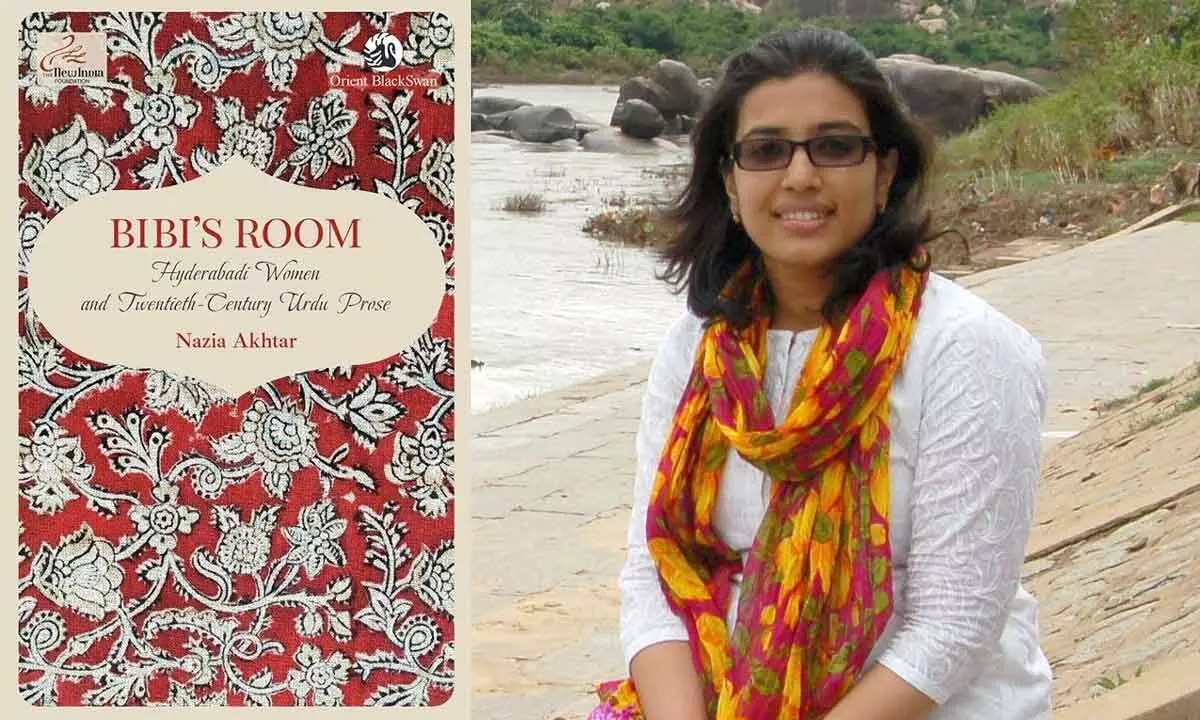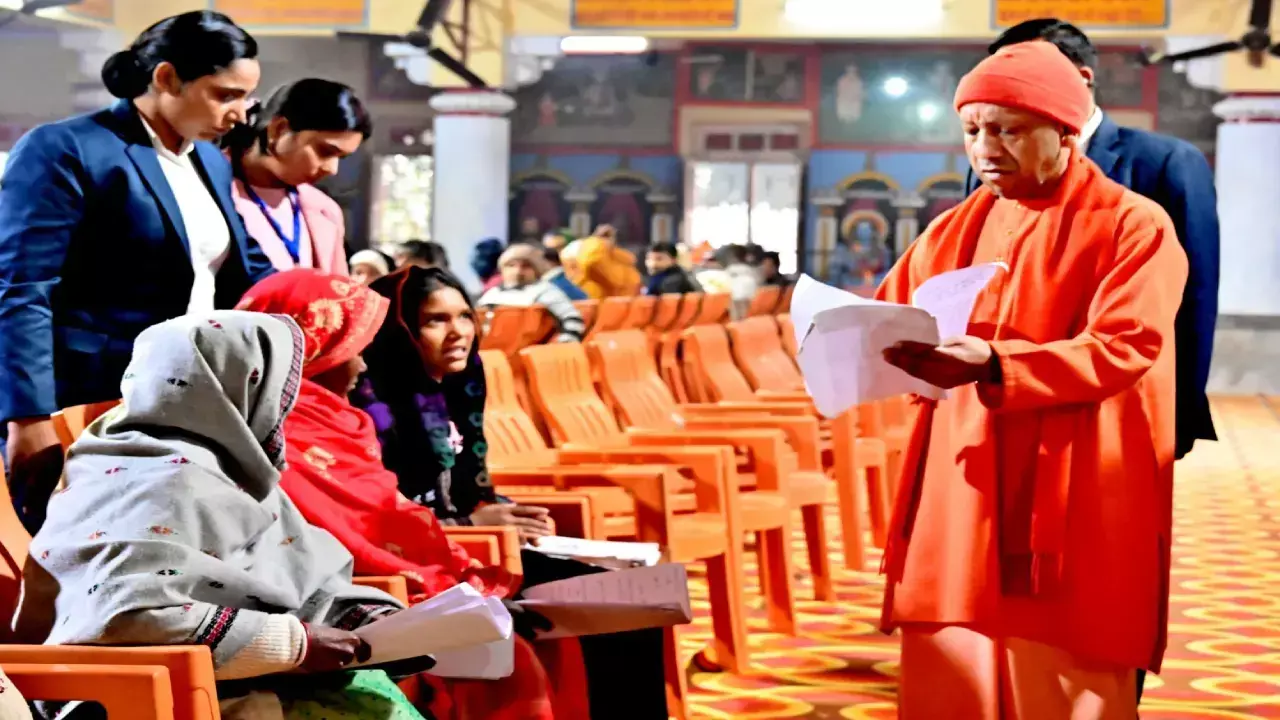A writer fighting for writers

Nazia Akhtar
Nazia Akhtar, an Assistant Professor of Literature at the International Institute of Information Technology, Hyderabad, comes up with a book “Bibi’s Room: Hyderabadi Women and Twentieth-Century Urdu Prose” which addresses the absence of scholarship on Hyderabadi women writers in three ways: representative translations; short, nuanced biographies; and critical analyses of their oeuvres—all framed against twentieth-century Hyderabadi history, politics, culture, and society
Nazia Akhtar, an Assistant Professor of Literature at the International Institute of Information Technology, Gachibowli, Hyderabad, Telangana, studied English and Russian literature during her early days at university. After a few years, she shifted her focus to working on literature from India, specifically in the context of Hyderabad. She had spent significant amounts of time in Hyderabad as a child but didn't know much about it. Out of curiosity, she began to explore the history and literature of Hyderabad and realised that there was a lot of interest and significance here for me.
Prof Nazia Akhtar recently wrote a book titled "Bibi's Room: Hyderabadi Women and Twentieth-Century Urdu Prose."
The book studies the lives and work of three women writers from Hyderabad who wrote in Urdu: Zeenath Sajida, Najma Nikhat, and Jeelani Bano. It addresses the absence of scholarship on Hyderabadi women writers in three ways: representative translations; short, nuanced biographies; and critical analyses of their oeuvres—all framed against twentieth-century Hyderabadi history, politics, culture, and society.
Speaking about the idea of "Bibi's Room", Nazia says, "The idea for this book came to me many years ago, around 2015. I began to work on it in earnest when I received a New India Foundation fellowship in 2017. The fellowship allowed me to devote all my time to this project. Over three years, I taught myself Urdu, extensively researched the lives and writings of Hyderabadi women writers of Urdu, and wrote about the three women writers that you see profiled in the book."
About the title, "Bibi's Room: Hyderabadi Women and Twentieth-Century Urdu Prose," she says, "Zeenath Sajida, who is one of the writers whose work I have translated and discussed in this book, wrote an essay in which she stresses the importance of space and time for women to explore and fulfil their true potential. She writes that, first, patriarchy creates conditions in which girls and women cannot achieve as much as men or excel at whatever they choose to do. Then society mocks them for it and criticizes them for being inferior. She uses the term "Bibi" – which is used to refer to young girls and even older women affectionately – and writes that Bibi's room is never her own for her to think, create, or even rest in. The idea is that women are not given the opportunities and conditions to succeed. Zeenath Sajida probably drew this argument from Virginia Woolf's essay "A Room of One's Own.""
"By using "Bibi's Room" in the title of this book, I want to draw attention to the literal conditions and circumstances in which women live and write and the need to reformulate our attitudes towards success by bearing in mind the realities of gendered lives and creating more inclusive conditions of growth for everyone, especially women. Look at what can come out of "Bibi's Room" when Bibi is allowed to explore her full potential and when the environment in which women like her live and write is taken into account," she adds.
Regarding the three women writers discussed in this book Zeenath Sajida, Najma Nikhat, and Jeelani Bano, Nazia says, "Of these, Bano is most well-known. She received a Padmashri in 2001 for a long career spanning decades, in which she has written two novels and several collections of short stories. She writes about things as varied as gender, class, communalism, history etc. Najma Nikhat was a Progressive writer who wrote memorable short stories about the lives of women of all classes in feudal mansions. She also wrote about the loneliness of women who were experiencing for the first time what it was like to live away from their large, extended families in cities with their husbands and children."
"Zeenath Sajida wrote short stories, but as a scholar and writer of literary essays, she makes the most remarkable contribution to Urdu literature. Women's writing in the non-fiction genres of humour and satire has been totally overlooked, but it has thrived in Hyderabad for the better part of a century. Zeenath Sajida's essays, which range from striking explorations of gender to the everyday follies and foibles of middle-class people, are fine examples of the genre that must be read and known by more people. She also wrote hilarious pen-portraits of her literary friends that have turned into classics of humorous writing from Hyderabad."
"I hope there will be many more books on women's writings, especially Urdu writings from the Deccan and south India. Perspectives from regions other than the north decentre the hegemony of many things that we assume are givens. They allow us to not only learn about a region we know little about but also have the potential to change what we know about other regions as a consequence of looking at another perspective on the same themes and issues. They also transform what we know about other aspects, such as the canon and historiography of Urdu literature and our assumptions about the histories of women – particularly Muslim women – in the subcontinent," Nazia says.
"All the women writers from Hyderabad that I have read and worked on – including the three writers in this book – have emphasised what Hyderabadis proudly call their "Ganga-Jamni Tehzeeb," a centuries-old pluralistic and syncretic tradition of co-existence between different communities in the Deccan. The writers in this book, especially Jeelani Bano, worry about what is happening to this shared tradition and urge their readers to do something to protect and preserve it," she concludes.
What inspired the idea of bringing forth the stories of women writers of Urdu?
As a result of the excellent work of translators and scholars, English-language audiences know about the lives and work of women writers who wrote in Urdu in other parts of the subcontinent, such as Ismat Chughtai, Rashid Jahan, and Qurratulain Hyder. However, apart from Zakia Mashhadi's fine translations of Jeelani Bano's work and Reema Abbasi's recently published work on Wajida Tabassum, nothing is available in English regarding Hyderabadi women writers of Urdu. Even in Urdu, there are only a few scholars – Nasiruddin Hashmi and Amena Tahseen are prominent – who have worked rigorously and in a sustained manner on the history and concerns of the women writers of the Deccan. So there is a desperate need to write about these writers and to translate their work.
What do you feel is the reason for this neglect?
There is a triple marginalisation at work. Hyderabadi women writers have been ignored for reasons of gender, region, and politics. Women writers are generally neglected in publishing and scholarship, which are both male-centric. Second, Urdu is usually associated with north India, which is ironic, given that it was in the Deccan that literature in this language first flourished in a form that is now known as Dakhni, years and years before Urdu became a prominent literary medium in the courts and cities of the north. Third, Hyderabad was a princely state, and it suited the British colonial power to create the impression that it was only in British India, i.e. areas under direct British control, where there was any social progress and cultural life to speak of. So the history and culture of princely states remain neglected, and it is only recently that a shift in this perception has occurred.















